 DonNTU
DonNTU Master's portal
Master's portal RU
RU DonNTU DonNTU |
 Master's portal Master's portal |
 RU RU |

|
Accomplish: Ilya Naftulin Faculty: Electrotecnical Speciality: Electrical systems and networks Theme of master's work: The spectral analysis stator currents of induction motors with cage rotor Scientific advisor is: doctor Polkovnichenko D.V. |
Main page Library Links Report about the search Personal task |
Relevance
Now alternating current motors are the largest consumers of electric energy. According to last researches, they consume over 80% of the produced electric power [1]. Squirrel cage induction machine is the most important part of the assembly line in the industry. It is unrivalled because of its ruggedness, simplicity, and relatively low cost. Their role in industry increased after the development of adjustable speed drives and also their integration in energy conversion [4]. However while in service, there can be damages of elements of the motor, that in turn leads to its premature exit out of operation. In many plants sudden failure of the motor can lead to dramatic consequences. Following statistical data obtained by numerous researches, the character of damages of alternating current motors: Damages of a stator - 38%, damages of a rotor - 10%, damages of elements of bearings - 40%, other damages - 12% [1].
Recent methods of diagnostics of a condition of the electric machines, based on performance of monitoring of a currents with the subsequent performance of the special spectral analysis of the received signal, that allows to determine a condition of various elements of the motor with a high degree of reliability. The important advantage of such approach is that carrying out of monitoring of a current of the electric motor can be executed as directly on it, and in an power supply panel [1].
Aim and tasks
The aim of the work is to explore the method of diagnostic of induction motors’ technical state on the basis of spectral analysis of stator currents. To achieve this aim it is necessary to fulfill the following tasks:
Scientific novelty and practical value
Using the methods of diagnostic of induction motors technical state allows to minimize the costs connected with faults of induction motors. It is possible due to the on-time detection of fault incidence on stream. Also it makes possible the conversion from planned maintenances to the service system on operating conditions.
Since 1985, Current Signature Analysis (CSA) has been growing as a preferred predictive maintenance tool to identify damaged rotors and air gap eccentricity in induction motors. CSA is based on the observation that variances in the stator-rotor air gap are reflected back into the motor’s current signature through the air gap flux affecting the counter electromotive force (CEMF). These changes in CEMF then modulate the running current turning an induction motor into an efficient transducer. By performing a Fast Fourier Transform (FFT) on motor current the power cables can act as permanently installed test leads for predictive maintenance applications. A FFT is a mathematical operation that extracts the frequency information from a time domain signal and transforms it to the frequency domain. The frequency domain is a graph of the amplitude of a signal at a given frequency. In the frequency domain, the height of the peak represents the amplitude of the signal. Figure 1 shows the relationship between the time domain (t), the frequency domain (f), and amplitude (A) [2].

Figure 1 - Relationship Between Time, Frequency, and Amplitude
The physical principle put in a basis of work of a diagnostic complex, consists that any perturbations in work of an electric and/or mechanical part of the electric motor and the device connected with it lead to changes of a magnetic field in a electric machine and, hence, to weak modulation of a currents consumed by the electric motor [1].
Thus, presence in a spectrum of a currents of the motor characteristic frequencies of the certain amplitude means presence of damages of an electric and/or mechanical part of the electric motor and the mechanical device connected with it [1].
The structure of a complex include demountable current sensors with the linear frequency characteristic, the conditioner of a signal (the filter of low frequencies interfering occurrence of false frequencies of signals (aliasing)) at their digitization, the analog-digital converter (ADC), a personal computer with the necessary software for gathering and processing of the information.
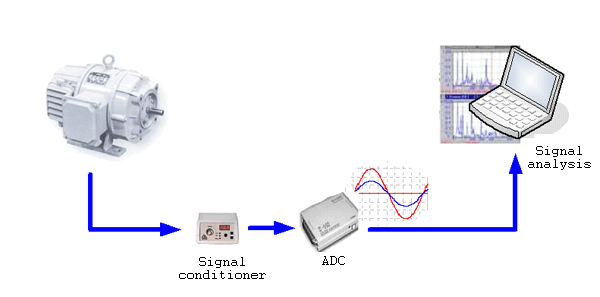
Figure 2 – Block-scheme of a diagnostic complex
Stator faults
An inter-turnshort-circuit fault is one of the most difficult failures to detect. Depending on the type of motor protection, the motor may continue to run, but the heating in the short circuited turns will soon cause severe faults like phase-to-phase or coil-to-ground faults. That is why, the incipient inter-turn short-circuit in the stator winding is a very important fault and a valuable research subject [4].
More sophisticated methods such as Park’s vector approach [3], negative sequence impedance, axial flux monitoring or the motor current signature analysis method (MCSA) have been proposed for electrical machine inter-turn fault detection and localisation.
Figure 3 presents spectra of Park vector of stator currents with 10% of winding turns short-circuited in the first stator phase

Figure 3 - Spectra of Park vector of stator currents with 10% of winding turns short-circuited in the first stator phase.
Rotor faults
When a bar or a portion of ring is broken, corresponding flux harmonics are produced and they induce harmonics in the stator currents. The stator current is modulated in amplitude by the slip frequency. This modulation increased in the case of rotor faults. The characteristic frequencies (due to the fault) provided by current spectrum analysis are [7]:

As an illustration of the predictable signatures figures 4 and 5 show the stator current spectrum for a 5.5 kW, 50 Hz, 2 pole pair and 1470-rpm induction motor with sound rotor and with four broken bars respectively. The machine was operating at full load. The synchronous detection of the rotation frequency (Fr) allows the calculation of s, the characteristic frequencies values and the associated amplitudes.
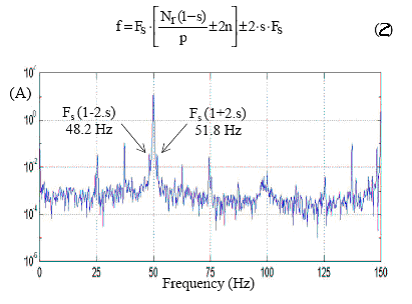
Figure 4 – FFT zoom current spectrum – sound rotor
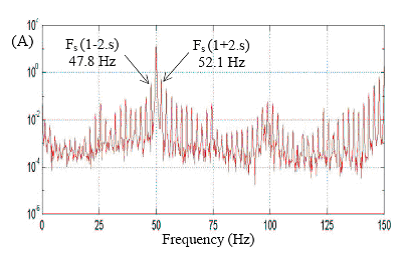
Figure 5 – FFT zoom current spectrum – 4 broken bars
The work [2] offers the following algoritm of detection of rotor faults.In CSA, the pole pass frequency (FP) appears as sidebands surrounding the line frequency (FL) after performing a FFT on a captured signal. The synchronous magnetic pattern of the stator rotates faster than the rotor cage. This implies that any given rotor bar is passed by all of the magnetic poles in one rotation of the slip frequency. The rate at which this occurs is termed the FP. Often in vibration analysis the term for this is called the motor pole passing frequency (PPF). (PPF = motor slip X number of poles). The difference in amplitude between the FL and the FP is an indication of rotor health. Empirical research has shown that a difference of over 54 dB indicates a healthy rotor while less than 45 dB indicates a degraded (i.e., high resistance joints, cracked or broken bars) condition exists in the rotor. An example of CSA showing a damaged rotor is shown in Figure 6.
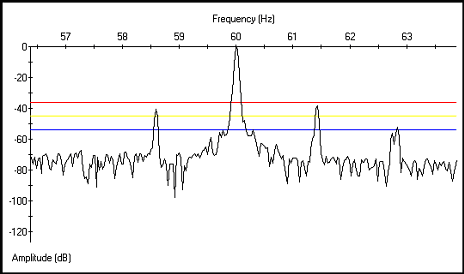
Figure 6 – Spectrum of a motor with damaged rotor.
Mechanical components
Stator currents are easily measured and their spectra give some information on numerous defects [8] and [9]. The currents provide information on broken bars or rings, misalignment and static or dynamic eccentricities. Mechanical faults such as bearing failures are also detected on current spectrum.
Air Gap Eccentricity describes the measurable distance between the stator and rotor within the motor. There are two types of eccentricity, static and dynamic. Static eccentricity is when the minimum air gap is fixed in space such as when the rotor is misaligned along the stator bore. Dynamic eccentricity describes the condition when the minimum air gap revolves with the rotor. A bowed rotor results in a dynamic eccentricity. If the distance between the length of the stator bore and rotor is not equal throughout the entire circumference, varying magnetic flux within the air gap creates imbalances in the current flow, which can be identified in the current spectrum. The effect of this condition is seen as multiple sidebands of odd harmonics of the line frequency powering the motor. These sidebands will develop around the eccentricity frequency (FECC).
FECC = (# of rotor bars) X (RPM/60)) (3)
Figure 7 is CSA results from a motor operating with an excessive air gap eccentricity. The more severe the eccentricity becomes, the amplitude of the peaks will increase.
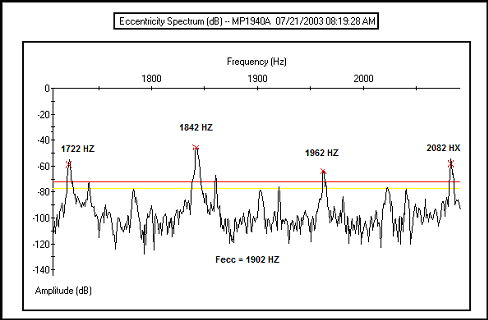
Figure 7 – Current spectrum of a motor with air gap eccentricity
Developing the ability to condition and filter the current signal passing through a motor’s windings expands CSA to detect load variations, which are related to mechanical processes. The term used for this process is demodulation. Demodulation is the process by which a signal is recovered from a modulated carrier. Modulation is the process by which some characteristic of a carrier (the 60 Hz applied to the motor) is varied (the rotor flux creating CEMF) in accordance with a modulating wave. Simply put, the load variations that repeat at a constant frequency are reflected into the stator currents through the motor’s CEMF. Remove the 60 Hz signal and these frequencies become apparent. The removal of the 60 Hz portion of the signal (demodulation of the carrier frequency) reveals repetitive load variations for analysis [2].
The work [5] offers the following algorithm of detection the excentricity based on Current Signature Analysis. The variation of the air-gap length, because of static or dynamic eccentricity, leads to variations in the air-gap flux density. As induced stator currents are affected, many of their frequency components can help to identify both static and dynamic eccentricity. These frequencies are given by (4), [6]:

где Fs - supply frequency;
Nr= number of rotor bars;
p - number of pole-pairs;
s - per unit slip;
nw = 1,3,5 …
For static eccentricity, nd=0. If static eccentricity increases then the magnitude of the lines at corresponding frequencies should also increase. In the case of dynamic eccentricity, nd = 1, and new components should appear in the current spectrum. Misalignment involves the increasing of components at frequencies specified by (5):

Fr- is the rotor speed frequency.
Since ball bearings support the rotor, bearing defect will produce radial motion between the rotor and the stator. Then anomalies produced on the air-gap flux density will affect the stator currents. That is why bearing vibration can be found on the stator current spectra [10].
The analysis showed that the methods of induction motors diagnostic on the basis of spectral analysis of stator currents allowed providing: